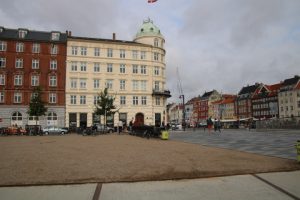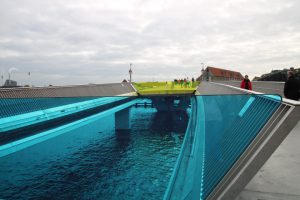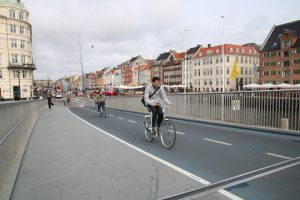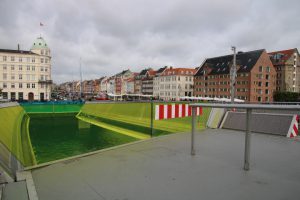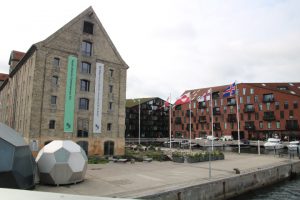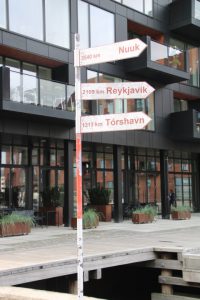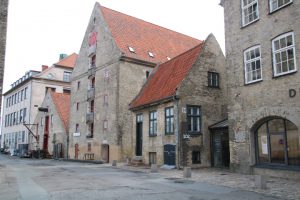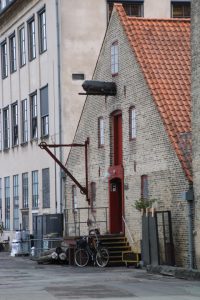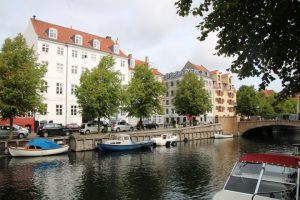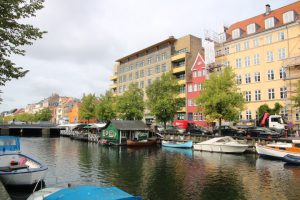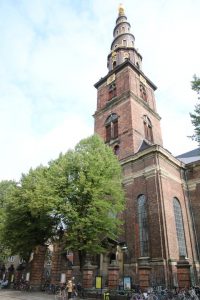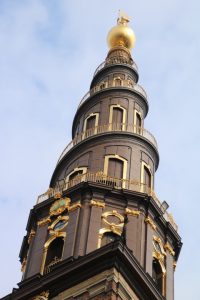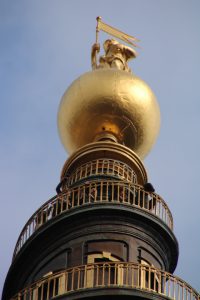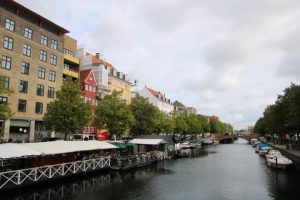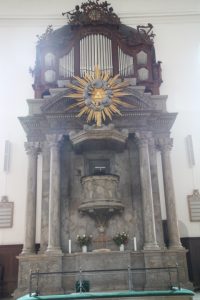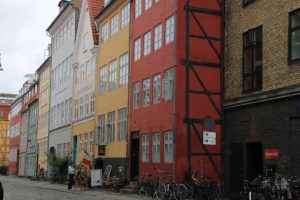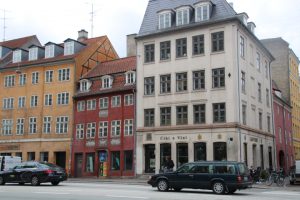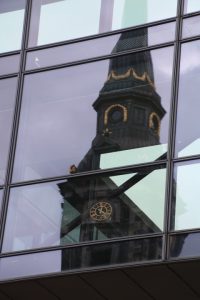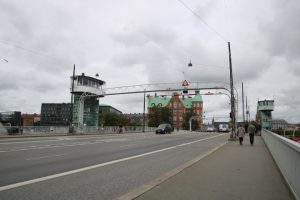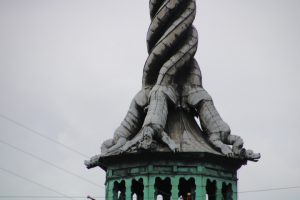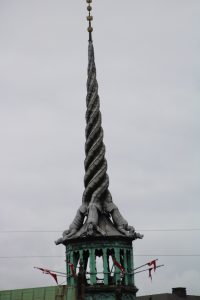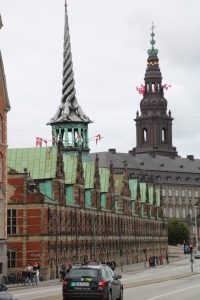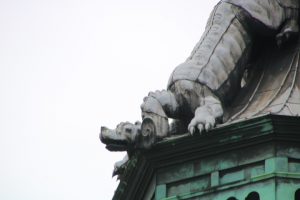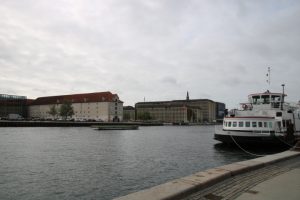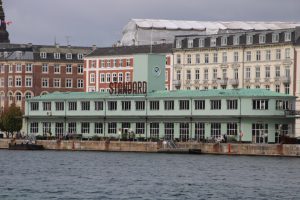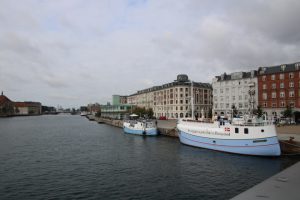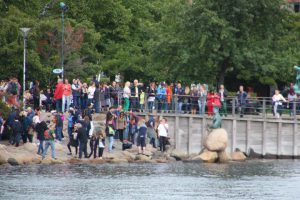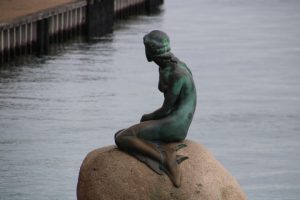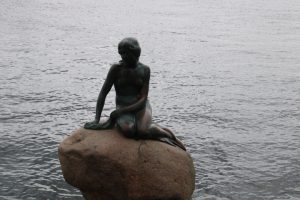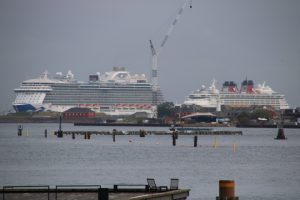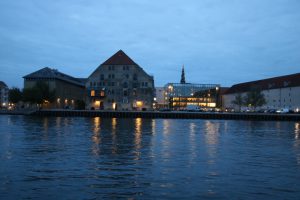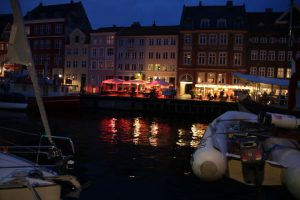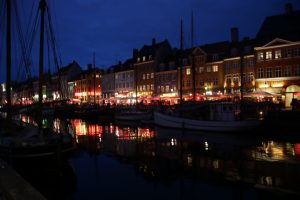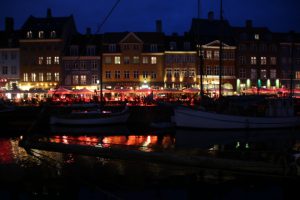This morning we explored the oldest part of Copenhagen, known as Christianshavn on the island Amager. Apparently there is some evidence that the earliest Europeans lived here but it was not until 1521 that Christian II engaged Dutch immigrants to use this fertile alluvial island to plant and run market gardens. In the 17th century Christian IV fortified the area and connected it to what is today the city of Copenhagen with bridges. We crossed the Inderhavn, formerly a major part of the port of Copenhagen lined with Art Deco buildings and the remains off a ferry terminal, by the new retractable bridge.

Arriving on the island we saw the North Atlantic House which is a cultural centre for Iceland, Greenland and the Faroes. It is an 18th century warehouse overlooking the Greenlandic trading area.
Our walk continued along the Overgaden Oven Vandet (upper street above the water) which was across the canal from the older Overgaden Neden Vandet (upper street below the water). The latter was built first but to keep out the waters of the Oresund a higher dyke had to be built. These two cobbled wharves are lined with 17th century buildings and are the home today of houseboats and yachts.
Adjacent to the dock is the Vor Frelsers Kirke, a Baroque church built between 1682 – 1696 by a Dutch-Norwegian architect in the form of a Greek cross. It has a twisted, spiral like tower added 50 years later.
A floating bar was an ideal stop for morning coffee. Across the main road from here is the Christians Kirke that was built between 1755-1759. The interior is ‘theatre like’ with upper level seating galleries and an altar taking the place of the stage. The royal family had a ‘box’ here directly opposite the altar and the organ. The church is in an area formerly inhabited by German traders and mariners and some of their warehouses and homes can still be seen.
Later we were alongside the Inderhavn where modern buildings with reflective glass walls provide interesting views of the city. Crossing the havn by the Krippels bro, an Art Deco bascule bridge built in 1937 but not used until after the war, we stumbled across the Borsen. This is the former stock exchange with a tower which we thought resembled a narwhal’s tusk, but is thought to be four entwined dragons’ tails. The major trading here was between Denmark, Sweden and Norway.
Passing the Gammel Dok (Old Dock) which housed navy ships in 1739 but later had warehouses for commercial vessels of the 19th century. Further exploration along the harbour banks took us past the Amalienborg complex which is essentially the equivalent to Buckingham Palace. Yesterday and today President Macron of France has been staying here. Security was tight both on land, the water and in the air.
 A little further along is the very small landmark, but with huge crowds surrounding it, of the ‘Little Mermaid’. It was made in 1913 by Edvard Eriksen, whose wife, Eline was the model.
A little further along is the very small landmark, but with huge crowds surrounding it, of the ‘Little Mermaid’. It was made in 1913 by Edvard Eriksen, whose wife, Eline was the model.
After dinner we slipped outside to the Nyhavn illuminated.
